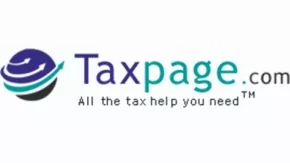- within Tax topic(s)
- with Senior Company Executives, HR and Finance and Tax Executives
- in United States
- with readers working within the Accounting & Consultancy and Property industries
Canada Strengthens Mandatory Disclosure Rules: What You Need to Know
On June 22, 2023, the Income Tax Act was amended to enhance Canada's mandatory disclosure rules, which are contained in Sections 237.3 to 237.5. These enhanced rules are designed to provide the Canada Revenue Agency (CRA) with earlier and comprehensive information, allowing for more effective oversight of transactions that present potential tax risks.
The rules relate to mandatory reporting in three key areas:
- Notifiable transactions
- Reportable transactions
- Transactions with uncertain tax treatments
The amendments also include penalties for non-compliance with the reporting requirements.
A wide range of entities are affected by these expanded requirements, including individuals, partnerships, trusts, advisers, promoters, and certain non-arm's length parties.
CRA Compliance: What Constitutes a Notifiable or Reportable Transaction?
A transaction is notifiable or reportable when it is designated as such by the Minister of National Revenue in concurrence with the Minister of Finance.
Notifiable Transactions
Transactions that fall within the category designated as "notifiable transactions" are required to be disclosed or reported to the CRA. See Section 237.4 of the Income Tax Act.
The following transactions have currently been classified as notifiable:
- Back-to-back arrangements
- Straddle loss creation transactions using a partnership
- Manipulation of bankruptcy status to reduce a forgiven amount in a commercial obligation
- Avoidance of the deemed disposition of trust property
- Using the purpose test under Section 256.1 of the Income Tax Act to avoid a deemed acquisition of control.
The list of transactions can be found at the CRA's website.
A notifiable transaction also includes any transaction that is substantially similar to an already designated transaction. Under Section 237.4(2) of the Income Tax Act, the phrase "substantially similar" includes a transaction or series of transactions that is expected to produce the same or similar tax consequences as an already designated transaction and that is either factually similar or based on the same or a similar tax strategy. This phrase "substantially similar" is to be interpreted broadly in favour of disclosure.
Reportable Transactions
Reportable transactions must also be reported or disclosed to the CRA.
Reportable transactions are 'avoidance transactions' that involve either a contingent fee arrangement, contractual protection, or confidential protection. The scope of transactions covered under this classification can be quite broad and generic. To provide more clarity, the CRA published a non-exhaustive list of transactions that are excluded from these categories. This list is derived from Section 237.3 of the Income Tax Act. Our experienced Canadian tax lawyers are available to assist you in determining whether your transactions fall within these categorizations, and to assess if the CRA's classification may be invalid due to conflicts with the provisions of the Income Tax Act.
Obligations to Disclose Notifiable and Reportable Transactions
You have an obligation to disclose a notifiable or reportable transaction if any of the following applies to you:
- You are receiving a tax benefit or expecting to receive a tax benefit from the transaction.
- You are entering into the transaction for the benefit of another who is receiving the tax benefit.
- You are a promoter or adviser entitled to a fee for the transaction.
- You do not deal at arm's length with a promoter or adviser, and you are entitled to receive a fee for the transaction.
Reportable Uncertain Tax Treatment
Uncertain Tax Treatment transactions are transactions where a tax treatment is applied or sought to be applied by an entity, but there is uncertainty as to whether such treatment will be accepted under applicable tax law.
Corporations must report these uncertain tax treatment transactions where all of the following apply to them:
- The assets of the corporation are worth at least 50 million dollars at the end of its financial year that coincides with that tax year
- The corporation is required to file a Canadian tax return for that year
- The audited financial statement of the corporation, or a related company, is made with the International Financial Reporting Standards or other country-specific generally accepted accounting principles
- The uncertainty of the tax treatment of the corporation's Canadian transactions is reflected in those audited financial statements.
See Section 237.5 of the Income Tax Act.
Reportable, Notifiable, and Uncertain Tax Treatment Transactions: Filing Obligations and Consequences of Non-Disclosure
CRA Filing Deadlines for Reportable, Notifiable, and Uncertain Tax Treatment Transactions
Reportable and notifiable transactions are reported to the CRA by filing Form RC312 – Reportable Transaction and Notifiable Transaction Information Return. This form must be filed no later than the earlier of:
- 90 days from the date the transaction was entered into, or
- 90 days from the date the taxpayer became contractually obligated to enter into the transaction.
For Uncertain Tax Treatment Transactions, disclosure is made using Form RC3133 – Reportable Uncertain Tax Treatments Information Return. This form must be submitted on or before the filing deadline for the corporation's regular tax filings.
Assessment and Reassessment Periods for Failure to File Required Forms
If these required forms are not filed, the CRA may issue an assessment or reassessment at any time, up to:
- 4 years after the original filing for most entities, or
- 3 years for individuals and Canadian-Controlled Private Corporations (CCPCs).
Penalties for Failure to Report Notifiable, Reportable, and Uncertain Tax Treatment Transactions
Failure to report notifiable or reportable transactions, when required, can result in significant penalties. Tax advisors and promoters who are obligated to disclose may lose all fees earned in relation to the transaction, and may also face additional monetary penalties for the non-compliance.
In the case of Uncertain Tax Treatment Transactions, failure to report may result in a penalty of $2,000 per week, up to a maximum of $100,000 for each uncertain tax treatment. If you have failed to report Uncertain Tax Treatment Transactions, consider using the Voluntary Disclosures Program to rectify your nonreporting.
PRO TAX TIPS: Why Sophisticated Taxpayers Should Seek Expert Canadian Tax Lawyer Guidance on Mandatory Disclosure Obligations
If you are a sophisticated taxpayer contemplating your next complex plan to minimize tax liabilities, it is prudent to seek guidance from an experienced Canadian tax lawyer to determine if the transactions should be reported to the Canada Revenue Agency (CRA).
Your failure to make this determination will not exempt your transaction(s) from being reported. This is because other persons—who may be related or unrelated to you—may also have a legal obligation to report the transaction. This could lead to unforeseen tax consequences and penalties for you. Taxpayers and their advisors must face this new reality, which stems from these enhancements to Canada's mandatory disclosure rules, as discussed in this article.
Frequently Asked Questions (FAQs):
What are the filing deadlines for notifiable, reportable, and uncertain tax treatment transactions?
- Notifiable and reportable transactions must be reported by filing Form RC312 no later than the earlier of 90 days from the date the transaction was entered into or 90 days from the date the taxpayer became contractually obligated to enter into it.
- Uncertain tax treatment transactions must be reported using Form RC3133 on or before the filing deadline for the corporation's regular tax filings.
When is a transaction considered "notifiable" under the Income Tax Act?
A transaction is notifiable when it is designated as such by the Minister of National Revenue in concurrence with the Minister of Finance. Examples of transactions that have been designated so far are: back-to-back arrangements; straddle loss creation transactions using a partnership; manipulation of bankruptcy status to reduce a forgiven amount in a commercial obligation; avoidance of deemed disposition of a trust property; use of the purpose test under Section 256.1 of the Income Tax Act to avoid a deemed acquisition of control.
Transactions that are substantially similar to a designated transaction are also considered notifiable transactions.
For a transaction to be considered "reportable", it must be an 'avoidance transaction.' What are avoidance transactions?
Section 245 of the Income Tax Act defines an avoidance transaction as a transaction in which it is reasonable to believe that obtaining a tax benefit is one of the primary purposes of undertaking or arranging it. This definition extends to a series of transactions, of which that transaction is a part of.
The content of this article is intended to provide a general guide to the subject matter. Specialist advice should be sought about your specific circumstances.


